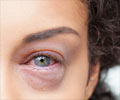Researchers at the University of Dartmouth studied the risk of getting cancer. A set of simple risk charts could help people put in perspective their
Researchers at the University of Dartmouth studied the risk of getting cancer. A set of simple risk charts could help people put in perspective their risk of dying from cancer, smoking, and other diseases and conditions. The four charts track separate categories: Women who have never smoked, women who are current smokers, men who have never smoked, and men who are current smokers.
Each chart contains a row for age along with columns including two types of vascular disease, five types of cancer, three types of infections, accidents and all causes of death combined. To use the chart, an individual simply finds his or her age and then reads across to the condition. The number found there represents the number of women or men per 800 who are projected to die of that condition in the next 10 years.Steven Wolin, a researcher at Dartmouth, said that the main reason is that people often get information about health risks in a sort of fragmentary way invariably about one particular disease. Without things to compare it to it's hard to put in perspective. This ususally puts the risk of different diseases side by side and in the context of all causes of mortality.
Steven believes the chart will help relieve the anxiety some individuals feel when bombarded with new health information. When faced with an estimate that 20,000 women will die of breast cancer in the next year, for example, people tend to overestimate their risk. To know what that (number) means, one needs to know how many women there are, and compare it to other causes" of death.
The charts should be useful to physicians, "particularly with regard to advising and trying to inform individuals about their risk of getting cancer as they contemplate prevention trials or screening strategies," said Donald L. Trump, chairman of medicine and senior vice president for clinical research at Roswell Park Cancer Institute in Buffalo, N.Y.
Trump said clinical researchers might also find use for the charts. "It is important for investigators to begin to realize that in certain situations, the risks of competing causes of mortality may be greater or competitive with the (disease) you know a patient has." In addition to overall risks, the charts point out some strong connections between smoking and other conditions. Steven observed that smoking increases a number of risk factors. "A smoker who is 40 years old has an all-cause mortality risk of (a non-smoker) who is 50. It's like they are ten years older."










